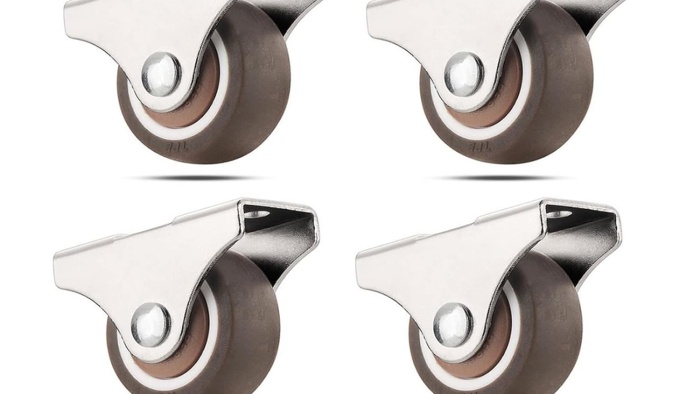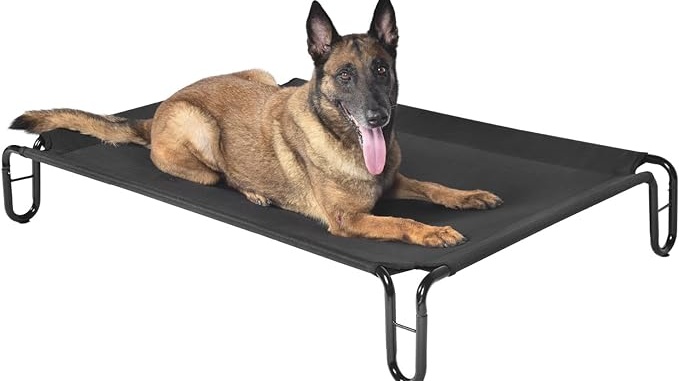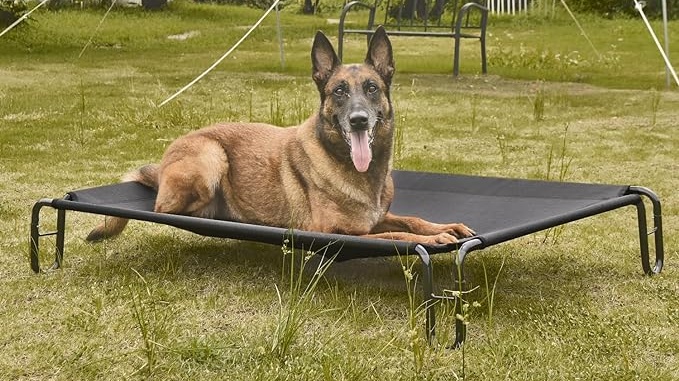
Diy PVC Dog Bed:A Mini Guide
DIY PVC dog bed is a wonderful way to show appreciation to your canine companions, who are undeniably man’s best friends. These loyal pets provide

Have you ever thought about making your pet’s dog elevated bed not just comfy, but also mobile? Imagine the ease of moving your dog’s bed from a sunny spot in the morning to a cozy nook in the evening.
In this blog, we’ll delve into the world of adding wheels to your dog’s elevated bed, making it conveniently mobile while ensuring it remains a safe and snug place for your pet.
The foundation of mobility for a dog elevated bed lies in selecting the right type of wheels or casters. The choice you make can greatly impact the bed’s maneuverability and stability.
When it comes to adding wheels to your dog elevated bed, you have two primary choices: fixed casters or swivel casters. Fixed casters allow movement in a straight line, ideal if you plan to move the bed back and forth along a specific path.

Swivel casters, on the other hand, offer more flexibility, allowing the bed to move in multiple directions. Swivel casters are generally preferable for their versatility, especially if you need to navigate around furniture or through doorways. The choice between fixed and swivel casters depends on:
Considering these factors will help you make an informed decision on the type of caster that best suits your needs.
The material of the casters is also an important consideration. Plastic wheels are lightweight and work well on carpets and soft surfaces. Metal wheels are more durable and suitable for outdoor use or on rough surfaces.
Rubber wheels are a middle-ground option, offering durability and floor protection, making them ideal for hardwood or tiled floors. The right material ensures smooth movement and longevity of the casters. Consider:
Choosing the appropriate material for your wheels will enhance the functionality and longevity of your dog’s elevated bed.
Incorporating wheels into your dog elevated bed requires some thoughtful modifications to the bed frame. This ensures that the bed remains stable and durable, even on the move.
To add wheels to your dog elevated bed, the frame must be sturdy enough to support the additional hardware and the weight of your pet. If you’re building the bed from scratch, incorporate the wheel fittings into your design.
For existing beds, reinforce areas where the wheels will be attached to ensure they can bear the weight and stress of movement. Consider adding additional support beams if necessary to distribute the weight evenly. When modifying or designing the frame:
Stability is crucial when adding wheels to a dog elevated bed. The bed should not wobble or tip over when your dog jumps on or off.
Ensure that the wheels are evenly spaced and securely attached. If the bed is particularly high, consider wider wheels for better stability.

Also, regularly check the screws or bolts holding the wheels in place, as they can loosen over time with movement. To ensure stability and durability:
Installing casters on a dog elevated bed is a straightforward process, but it requires precision and the right tools. Here’s a step-by-step guide to ensure a smooth installation.
Begin by flipping the bed frame upside down to access the base where the casters will be attached. If the bed frame is wooden, pre-drill holes to prevent the wood from splitting when you screw in the casters.
Align the mounting plate of the caster with these holes and use screws to secure it in place. If the bed frame is metal, you might need bolts and nuts for attachment. Ensure that all casters are aligned and tightened securely for even distribution of weight. Follow these steps:
The key tools for this job are a drill, a screwdriver, and possibly a wrench, depending on your bed frame’s material. When drilling holes, make sure they are slightly smaller than the screw’s diameter for a tight fit.
A tip for a smoother installation: mark the drill spots with a pencil or masking tape before drilling to ensure precise placement of the casters. Take your time during installation to ensure each caster is attached correctly and securely. Additional tips include:
Safety is paramount when adding mobility to your dog elevated bed. Ensuring the bed remains stable and secure while in motion is key to keeping your pet safe.
Many casters come with built-in brakes or locks. These are crucial for a dog elevated bed, as they prevent the bed from rolling away, especially if your floor is uneven or sloped.
Engage the brakes whenever the bed is not being moved to keep it stationary. This not only prevents accidental movements but also ensures your dog feels secure when getting on or off the bed. Considerations for a brake system:
To further prevent unwanted movement of the dog elevated bed, place the bed against a wall or in a corner when it’s not being moved. This provides an additional layer of stability.
Additionally, consider using caster cups or non-slip pads under the wheels when the bed is stationary. These small additions can make a big difference in keeping the bed firmly in place. Additional tips to prevent unwanted movement:
Like any moving part, the wheels on your dog elevated bed require regular maintenance and cleaning to function properly. Proper care ensures longevity and smooth operation.
Regularly check the wheels for any accumulated hair, dirt, or debris, which can hinder movement. Clean them with a damp cloth and, if necessary, use a small brush or toothpick to remove any tangled hair. Lubricating the wheels periodically with a suitable lubricant can also help maintain smooth movement and prevent squeaking. Maintenance tips:
Over time, the wheels of your dog elevated bed may show signs of wear and tear. Regular inspections can catch issues like cracks, flat spots, or loose fittings early. Replace any damaged or worn-out casters to ensure the bed’s mobility and safety. This proactive approach keeps the bed rolling smoothly and extends its lifespan. Inspection checklist:

In conclusion, adding wheels to your dog elevated bed brings convenience and flexibility to your pet’s life and yours. The mobility allows you to easily change the bed’s location, making cleaning around it a breeze and adapting to your pet’s preferences throughout the day.
By carefully selecting the right casters, modifying the bed frame, and ensuring safety and stability, you create a mobile haven that your pet will love. This simple upgrade can significantly enhance the functionality of your dog’s elevated bed, making it an even more valuable addition to your home.


DIY PVC dog bed is a wonderful way to show appreciation to your canine companions, who are undeniably man’s best friends. These loyal pets provide

When it comes to ensuring your pet’s comfort, the choice of a dog elevated bed can make a significant difference. In this blog, we delve

The moment you think of a dog elevated bed, the question arises: is it more suitable for a Great Dane or a Chihuahua? This blog

In the quest for the perfect dog elevated bed, pet owners are often faced with a dilemma: foldable or fixed? Each type offers unique benefits,

DIY PVC dog bed is a wonderful way to show appreciation to your canine companions, who are undeniably man’s best friends. These loyal pets provide

When it comes to ensuring your pet’s comfort, the choice of a dog elevated bed can make a significant difference. In this blog, we delve

The moment you think of a dog elevated bed, the question arises: is it more suitable for a Great Dane or a Chihuahua? This blog

In the quest for the perfect dog elevated bed, pet owners are often faced with a dilemma: foldable or fixed? Each type offers unique benefits,
Copyright © 2024 skyrestelevateddogbed. All Rights Reserved.